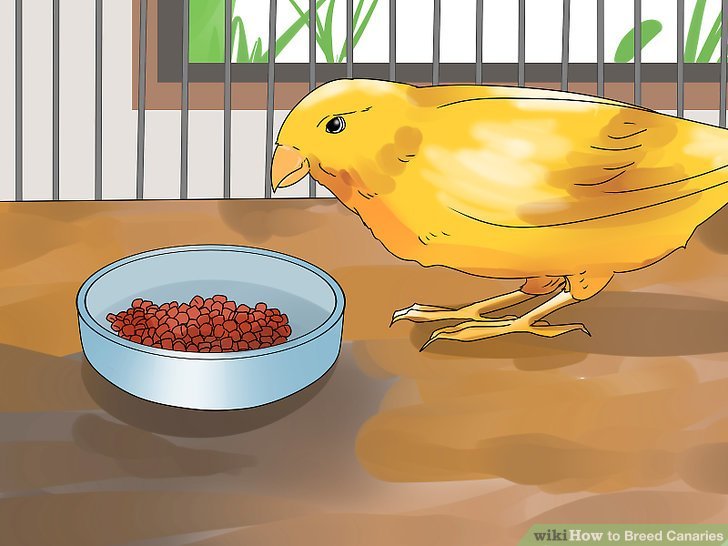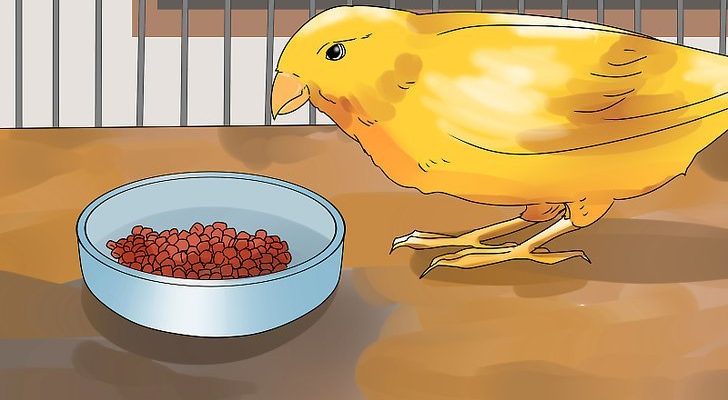
So, what do you need to know about nesting, eggs, and those adorable little chicks? Just like setting up a cozy nursery for a baby, it requires some thoughtful planning and preparation. Below, we’ll explore all the steps you need to take to set your feathery friends up for success.
Setting Up The Right Environment
Before diving into the nitty-gritty of breeding, it’s essential to create a comfortable space for your canaries. Think of this as their home, where they’ll feel safe and secure while starting a family.
Start with a spacious cage that allows them room to move around freely. A good rule of thumb is to provide at least 6 inches of space per canary, allowing them to stretch their wings without bumping into each other. Make sure the cage bars are close enough together, ideally no wider than 0.5 inches, to prevent curious little beaks from escaping!
Add in plenty of perches at different heights. This variety helps encourage natural behaviors; canaries love to hop and flit about. Additionally, placing nesting boxes—the cozy spots where your canaries will lay their eggs—is crucial. They should be at least 7 inches long and 6 inches wide, with an entrance hole that’s safe yet accessible.
Don’t forget about the bedding material! Soft, natural materials like coconut fibers or shredded paper can make a cozy nest. You want to encourage your canary to feel at home and ready to start a family.
Choosing The Right Pair
You might be wondering how to choose the best canaries for breeding. The pairing process is a bit like matchmaking, and it’s important to consider their traits. Look for healthy birds that display vibrant colors and a good temperament.
When selecting a pair, consider their genetics. If you want bright yellow chicks, for instance, both parents should carry those traits. But don’t stop there! Pay attention to their singing abilities and personalities. A harmonious, friendly pair often results in a happier breeding process.
Think about the age of your canaries, too. Ideally, both should be between 1 and 3 years old. Younger birds often have better breeding success, while older ones may not be as enthusiastic.
Lastly, it’s a good idea to let them get to know each other outside the cage first. Allow a little time for romance! This step can make a big difference in how they get along when they’re finally in that nesting space together.
Understanding Courtship and Nesting Behavior
Once you’ve paired your canaries, you’ll probably notice some delightful courtship behaviors. The male canary often sings beautiful melodies to woo the female. This is his way of saying, “Hey, I’m the best mate for you!”
In response, the female may fluff her feathers and move closer to him, displaying interest. During this time, it’s crucial to minimize stress. Keep their environment calm and avoid handling them too much.
After some time, you’ll see the female start showing signs of nesting behavior. She may begin to gather materials for her nest, often picking at the bedding you provided. This is a good sign! As she gets comfortable, she’ll settle in and may even lay her first egg.
You can help facilitate this process by ensuring she has access to soft nesting materials. Adding a bit of extra coconut fiber or soft grass can encourage her to build a comfortable nest. Just like humans, a cozy home makes a big difference!
Egg Laying: What To Expect
So, you’ve got a pair that’s feeling cozy, and now you’re about to welcome the addition of eggs. Typically, female canaries lay between 3 to 5 eggs in a single clutch, often at intervals of one day apart.
It’s essential to provide her with a nutritious diet, rich in seeds, fruits, and leafy greens. This will help ensure she’s healthy and gets all the necessary nutrients to support egg production. You might find her sitting quietly in her nesting box, and if you do, congratulations! She’s likely laying eggs!
Once the eggs arrive, you should avoid disturbing her too much. You can peek in to count, but try to minimize interactions. The female can take up to 14 days to incubate the eggs, and during this time, she’ll spend most of her time in the nest, only leaving for meals and a quick stretch.
Caring For Eggs And New Chicks
When those baby canaries hatch, it’s nothing short of magical! You’ll notice tiny, helpless chicks will begin peeping and relying on their parents for warmth and food. While it’s easy to get excited, remember that the parents typically do the bulk of the caring.
During the first few days, keep the environment warm and quiet. If you can, make sure the parents are getting plenty of food. They’ll need high-protein foods like egg food (often just boiled eggs and breadcrumbs) to help nourish the chicks.
As the chicks grow, they’ll start to develop their feathers and personalities. You should notice them becoming more vocal and curious. After about 3 weeks, they’ll begin to explore outside the nest.
Make sure the cage is safe for these adventurous little beings. Remove any hazards and keep perches low to prevent any accidental falls.
Preparing For The Chicks’ Independence
After a few weeks of nurturing, you’ll reach an exciting milestone—young canaries are ready to explore the world on their own. At about 4-6 weeks old, they’ll start learning to fly and can even feed themselves.
You can start the transition by introducing them to new areas of the cage. Providing plenty of perches and toys will encourage their natural instincts and keep them entertained.
Keep in mind, while these young canaries are independent, they may still benefit from the comfort of their parents. If possible, allow them to remain together for a bit longer to ensure they’re fully equipped for life outside the nest.
Once you’re confident in their independence, you can consider separating them from the adult canaries. Just remember to do this gradually to minimize stress for both the young birds and their parents.
Breeding canaries is an incredible journey filled with joy, anticipation, and a sprinkle of challenges. From selecting the right pair to nurturing those tiny chicks, every step allows you to connect with these beautiful birds.
As you dive into the world of canary breeding, remember to stay patient and observant. Each bird has its own personality, and your role as a caregiver is crucial in guiding them through their life stages. Embrace the journey, enjoy the chirps, and celebrate each new life that brings more color and song to your home!

